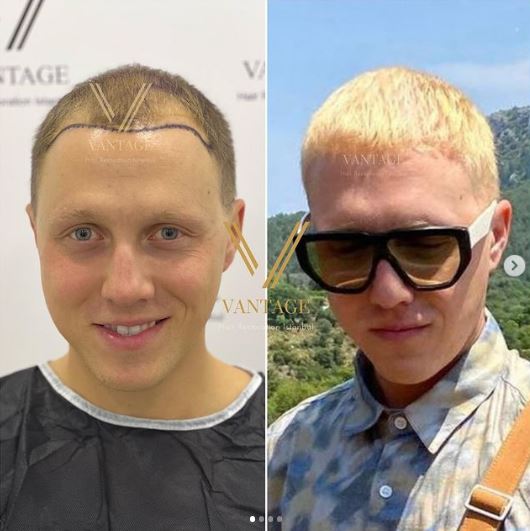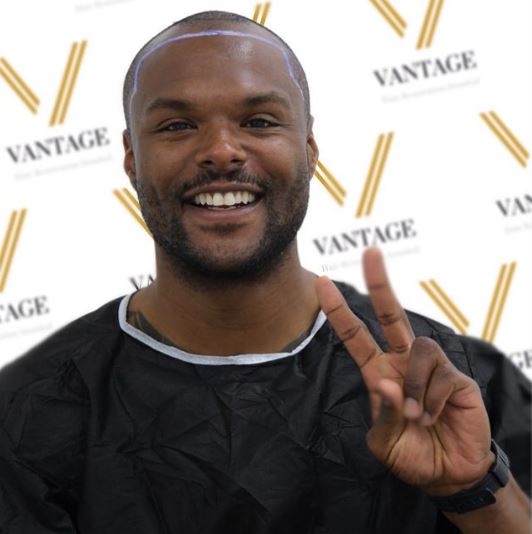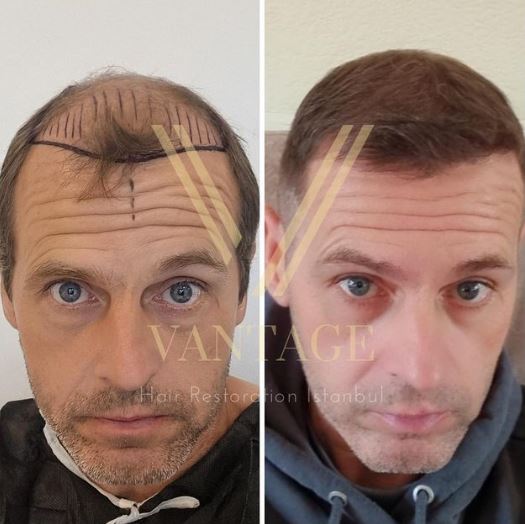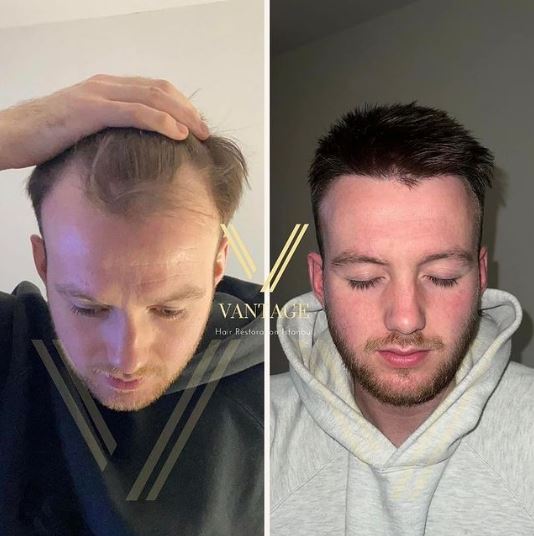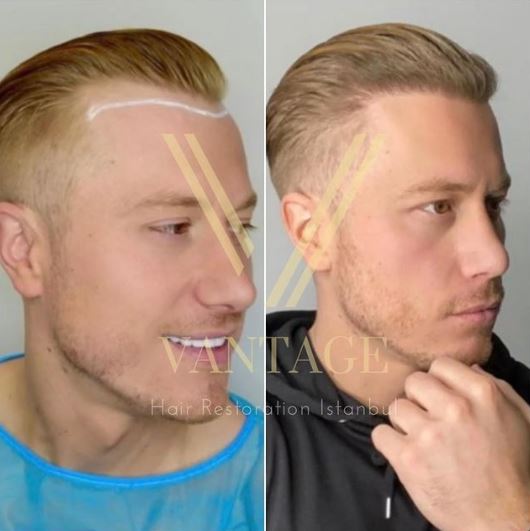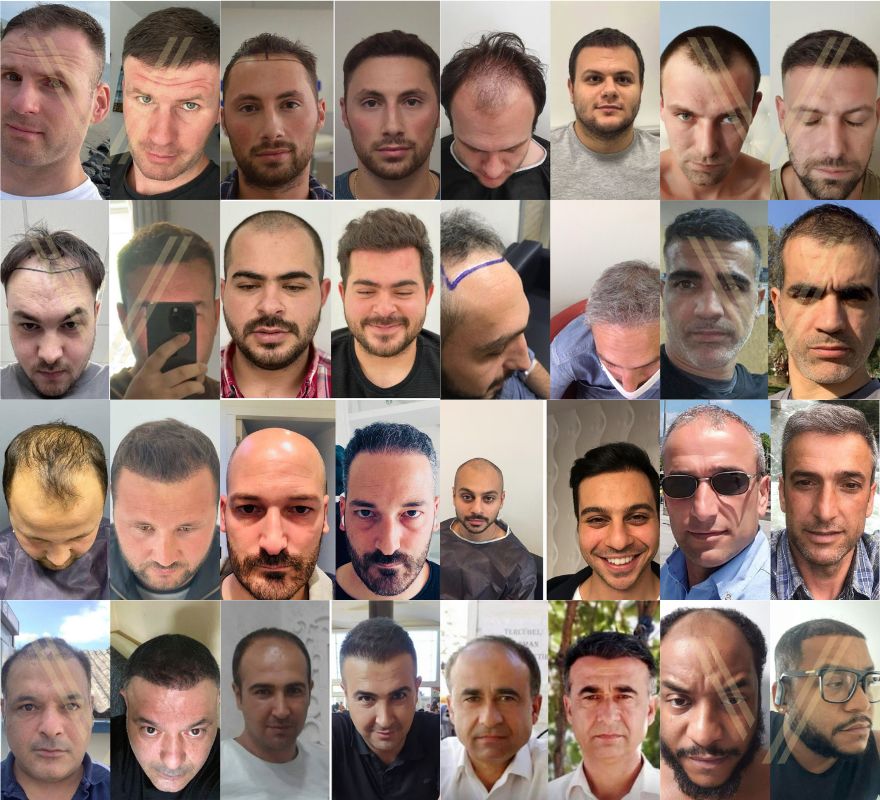
Please choose the number of grafts rage to explore Turkish hair transplant before & after photos.
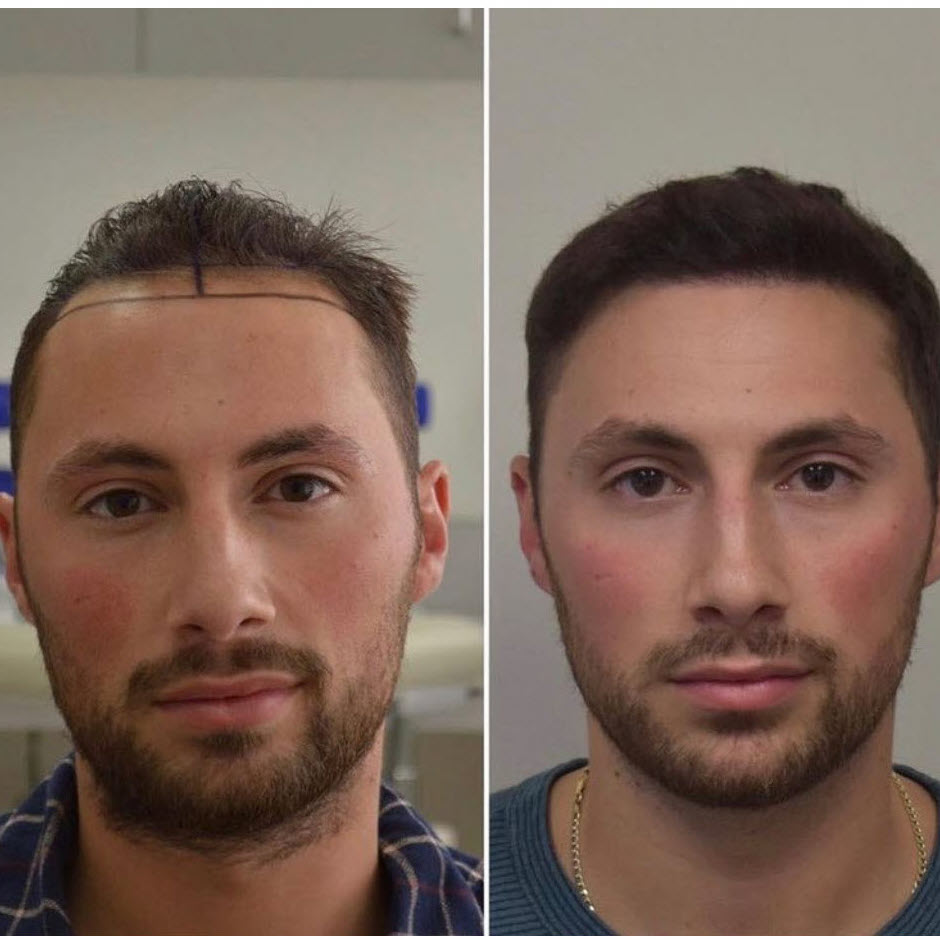
3200 Grafts (DHI Method)
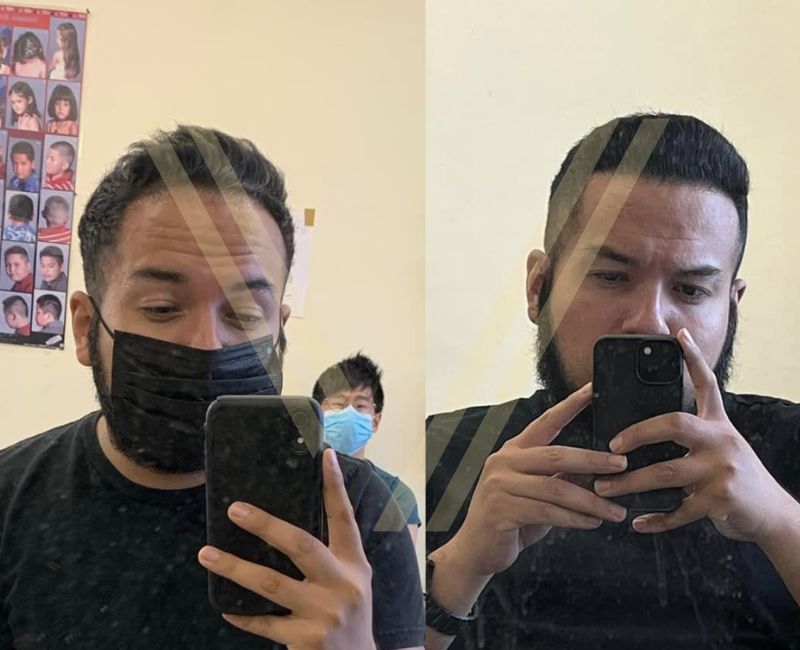
3400 Grafts Hair Transplant (FUE Method)
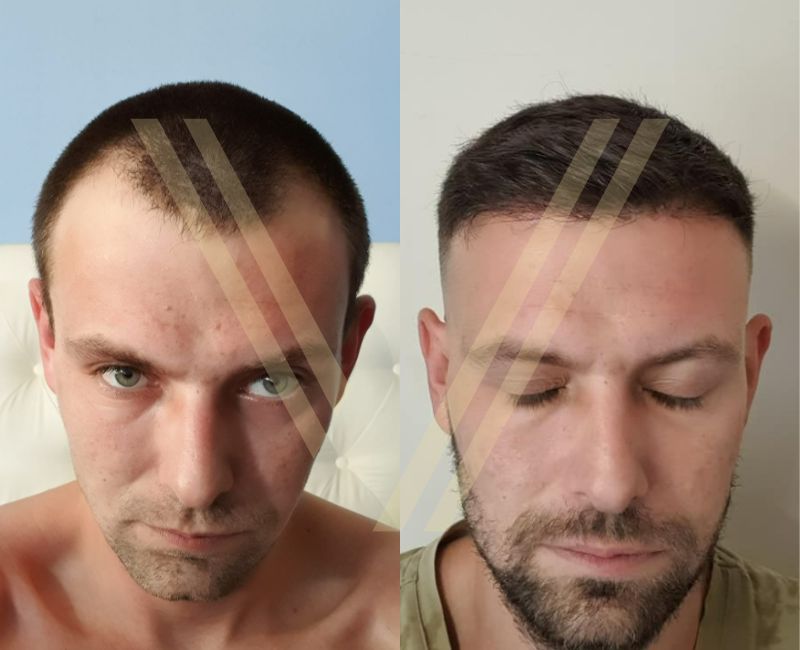
3400 Grafts Hair Transplant (FUE Method)
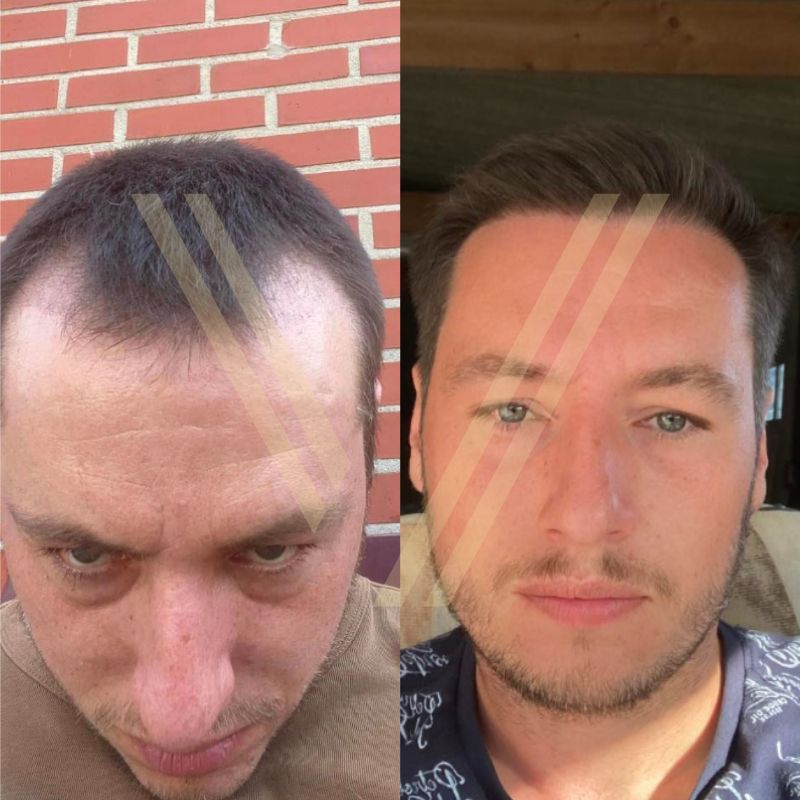
3000 Grafts Hair Transplant (FUE Method)
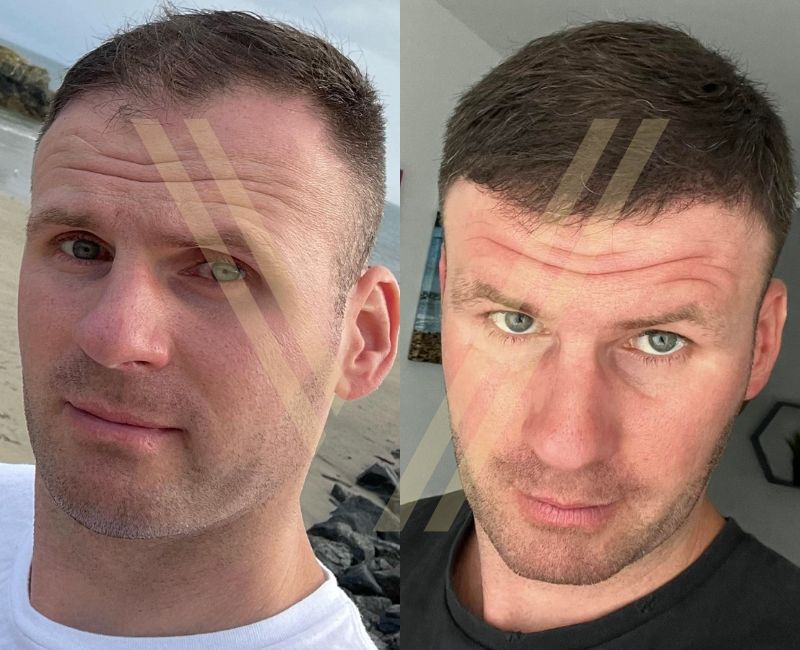
3400 Grafts Hair Transplant (FUE Method)
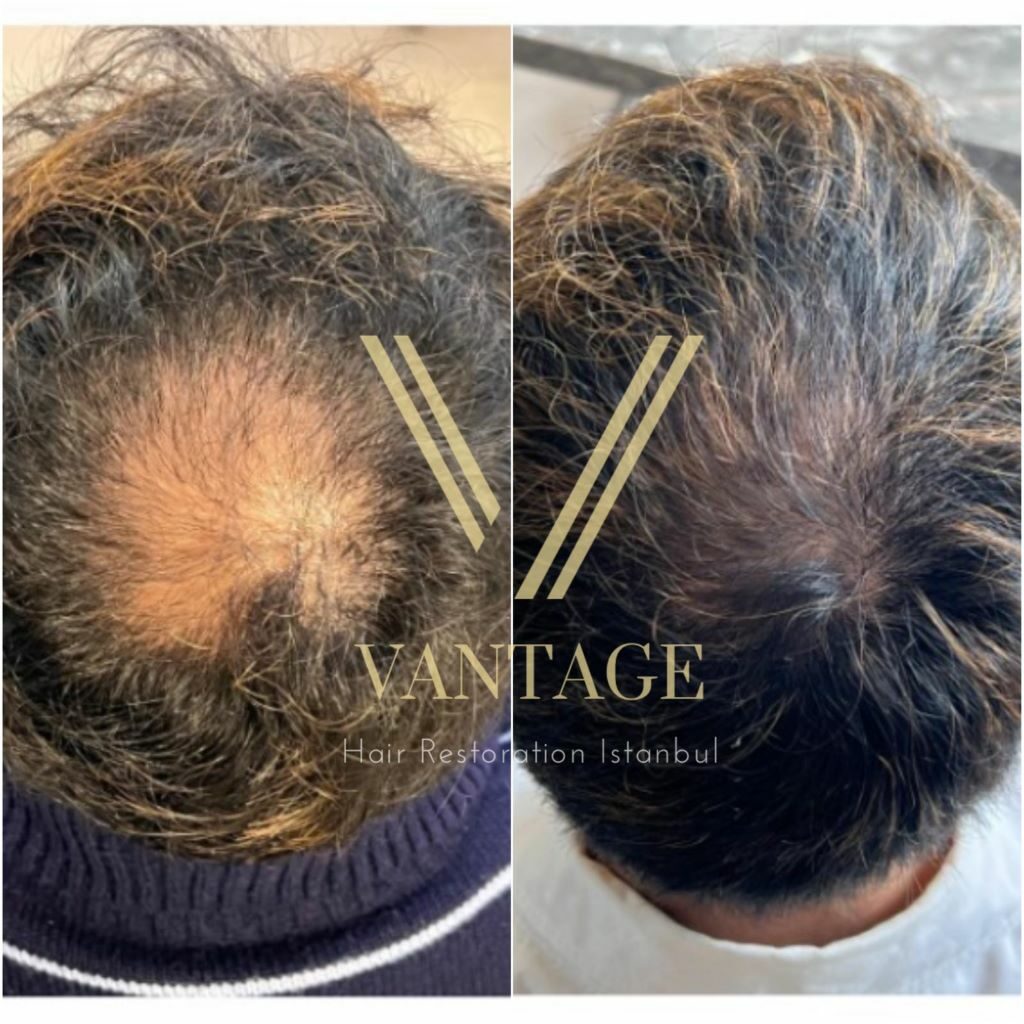
2600 Grafts Hair Transplant (FUE Method)
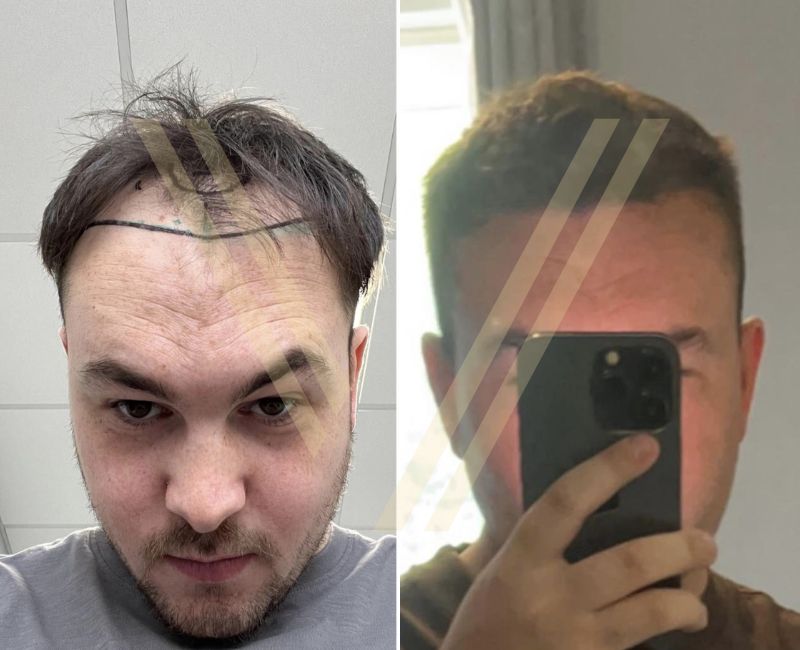
4000 Grafts (FUE Method)

4400 Grafts (FUE Method)
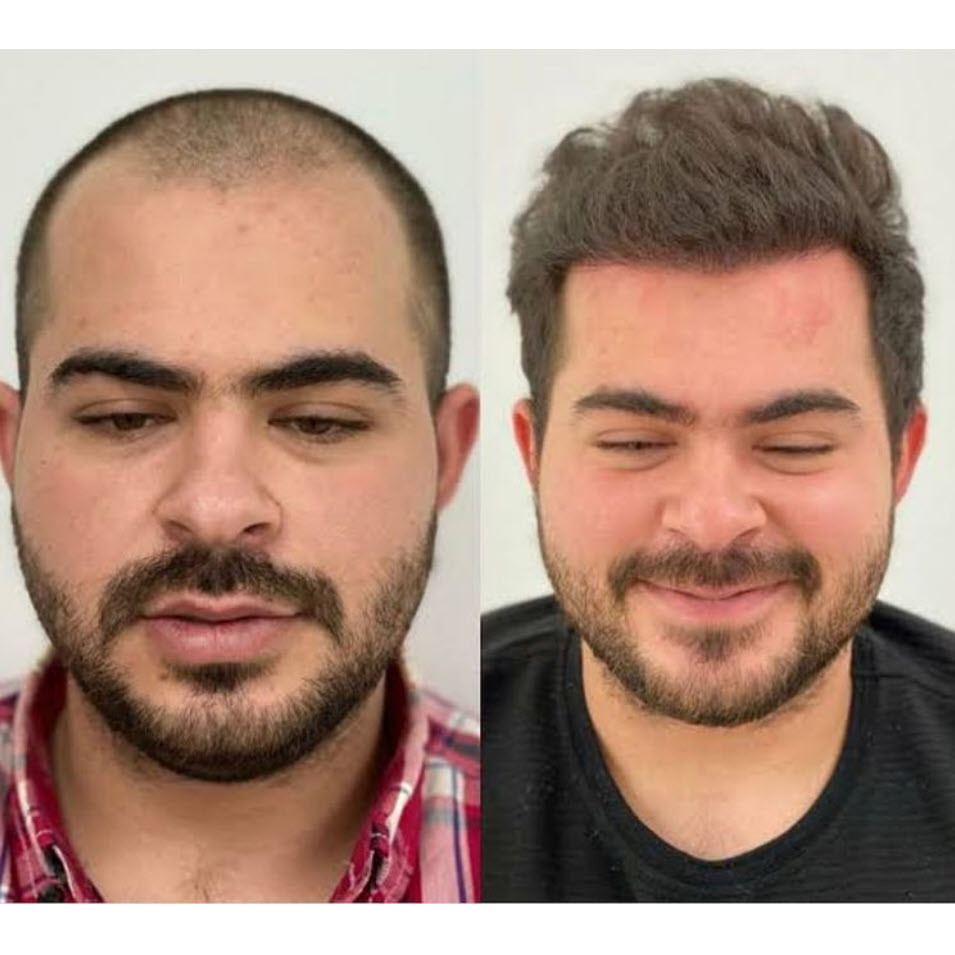
4400 Grafts (FUE Method)
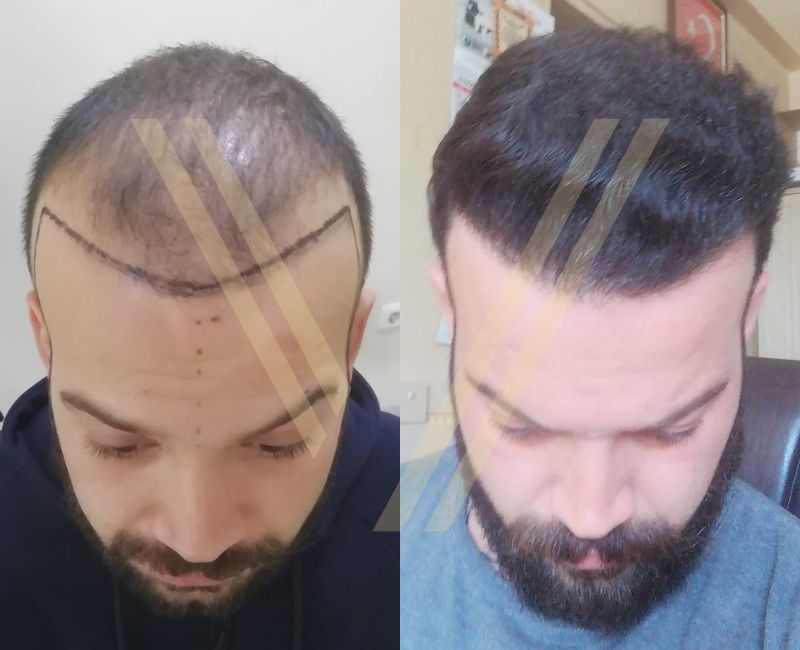
4500 Grafts (FUE Method)
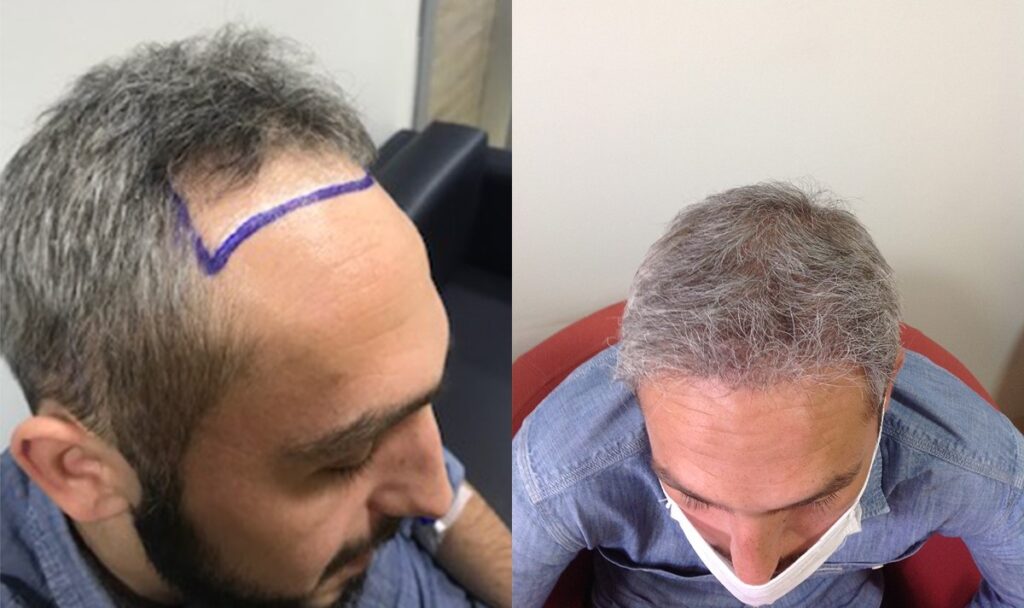
4200 Grafts (FUE Method)
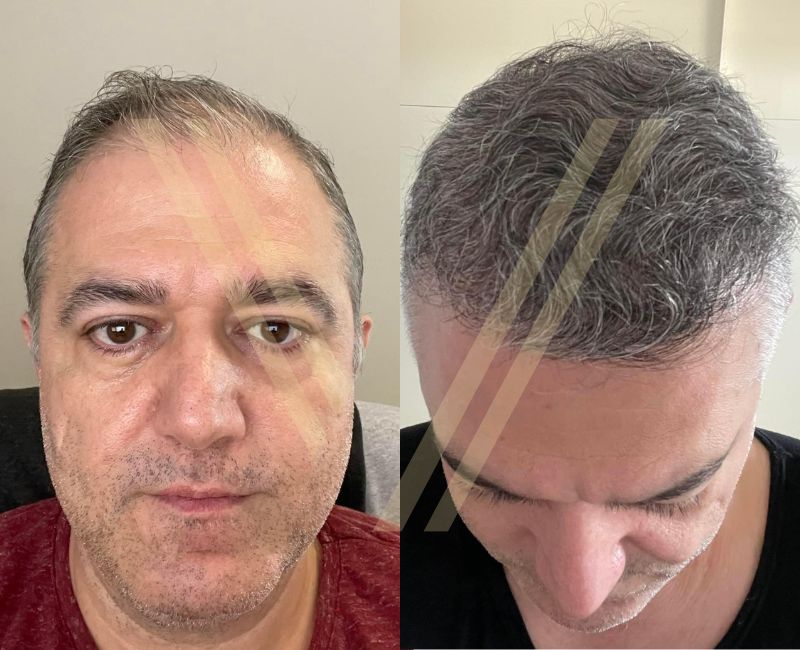
4300 Grafts (FUE Method)

4000 Grafts (FUE Method)
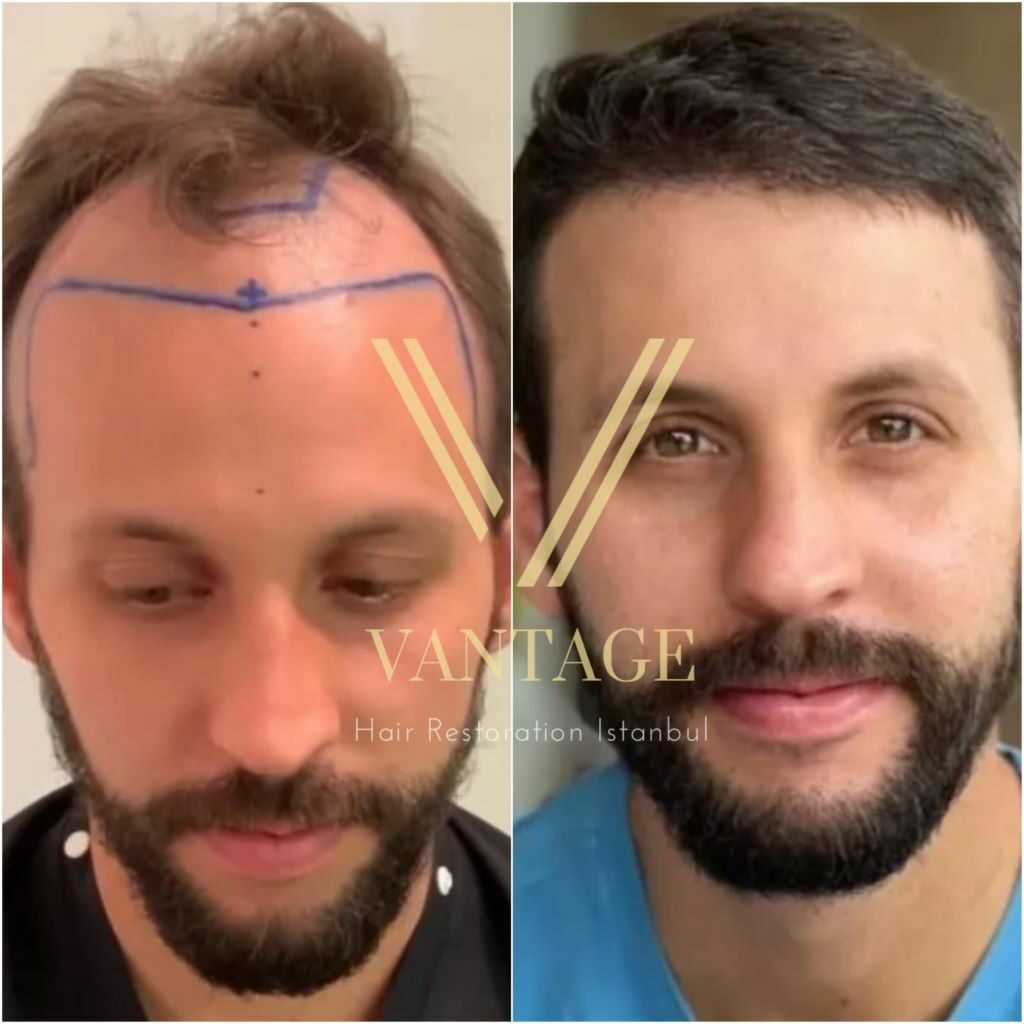
4100 Grafts (FUE Method)
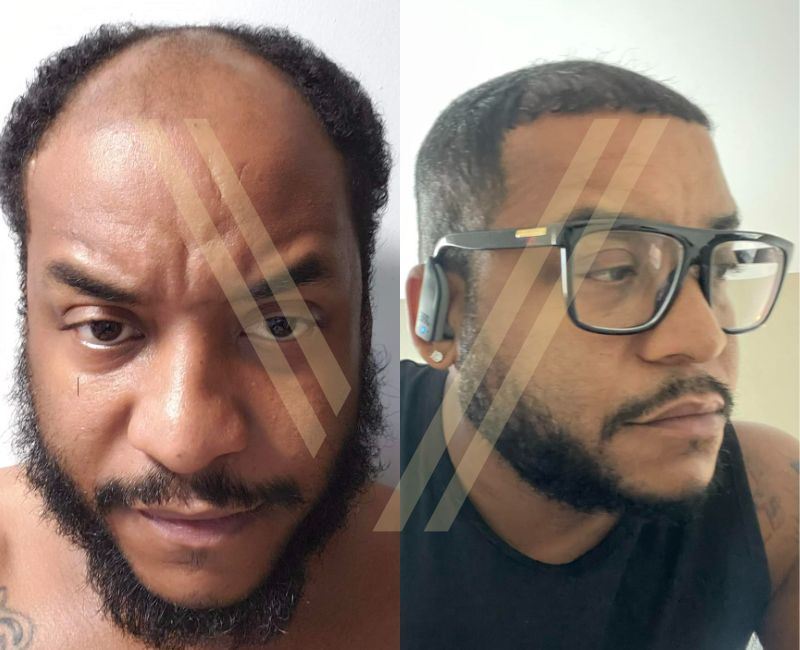
4600 Grafts (FUE Method)
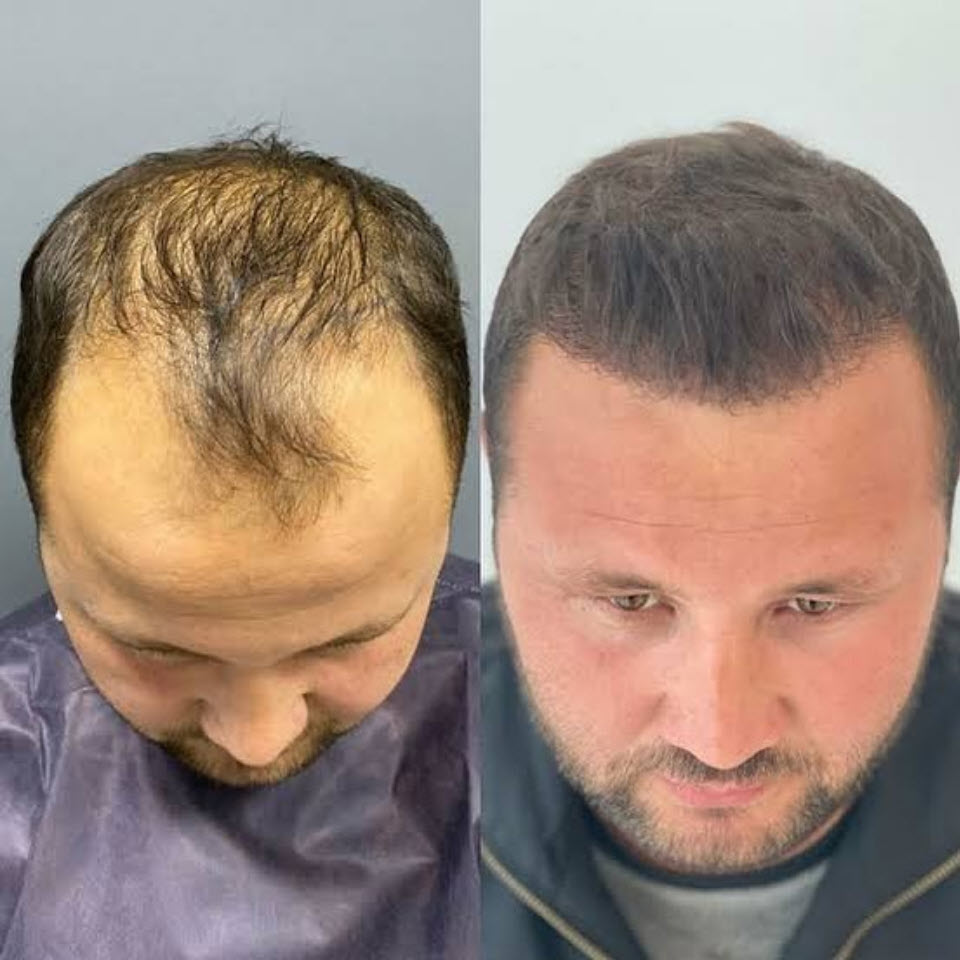
5000 Grafts (FUE Method)

5100 Grafts (FUE Method)
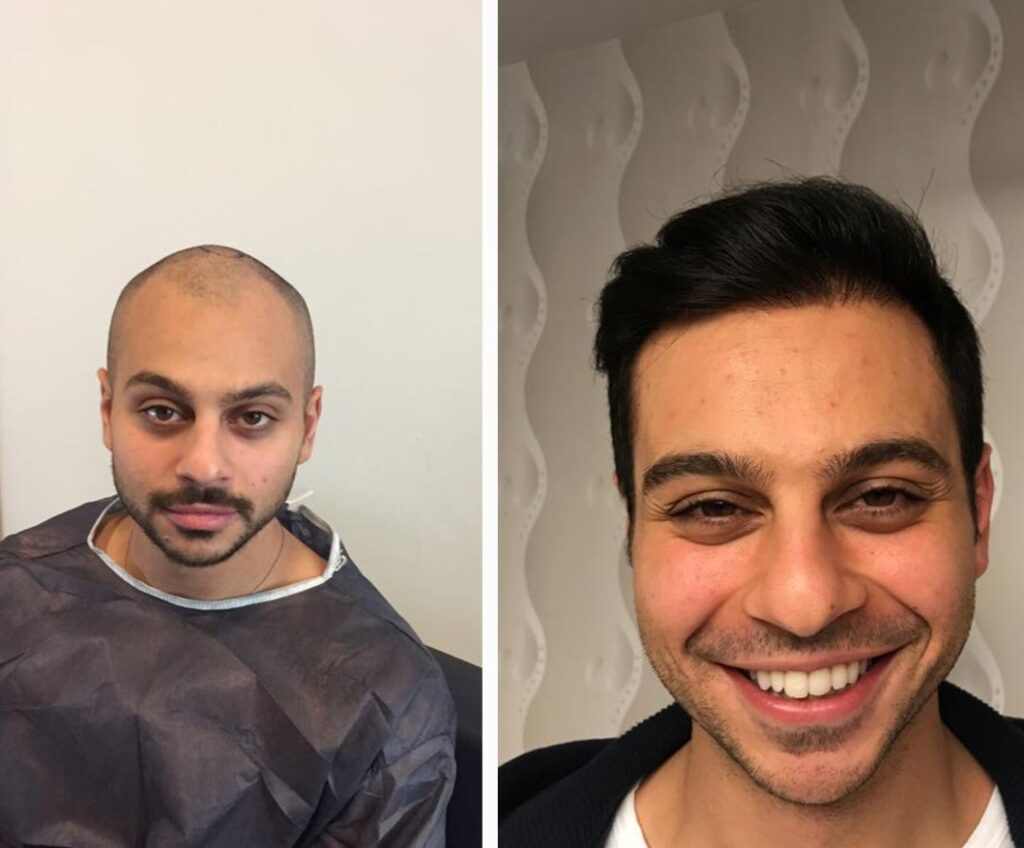
5200 Grafts (FUE Method)

5200 Grafts (FUE Method)

4800 Grafts (FUE Method)
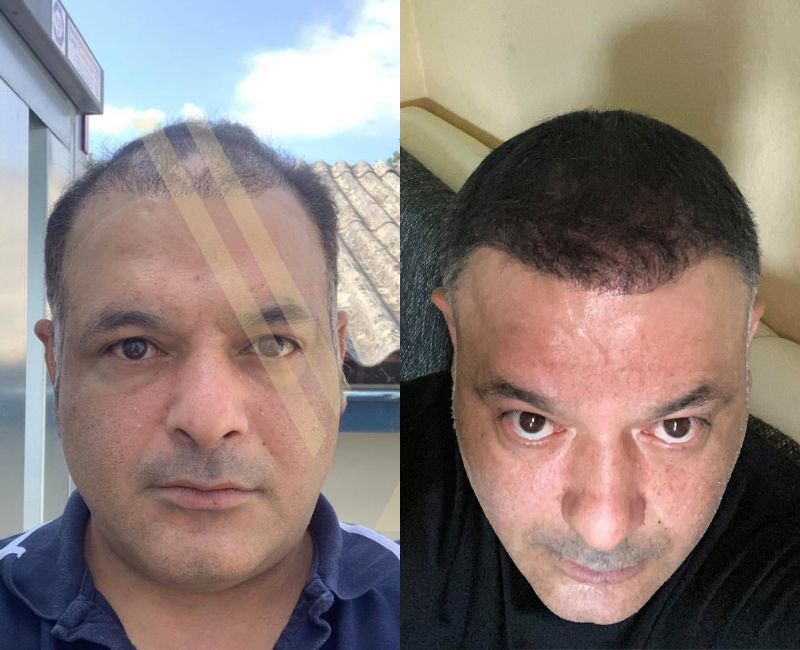
5400 Grafts (FUE Method)
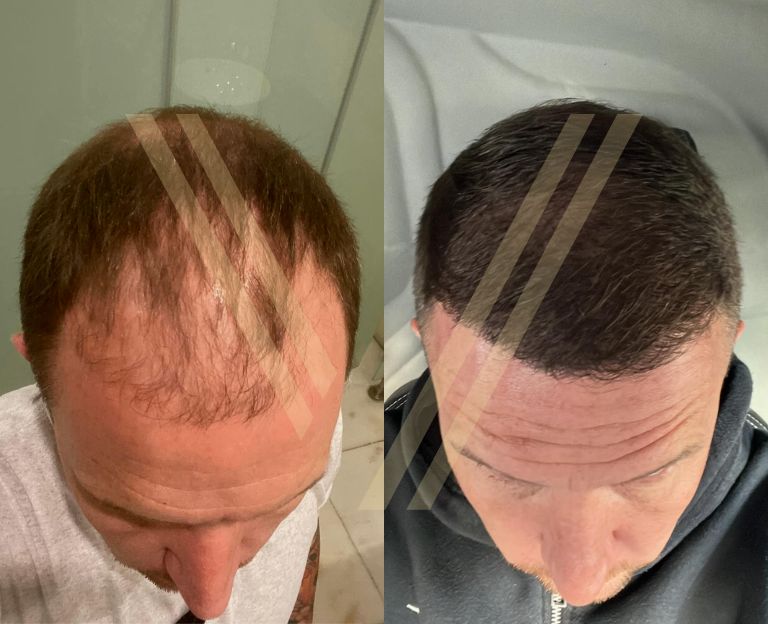
4700 Grafts (FUE Method)
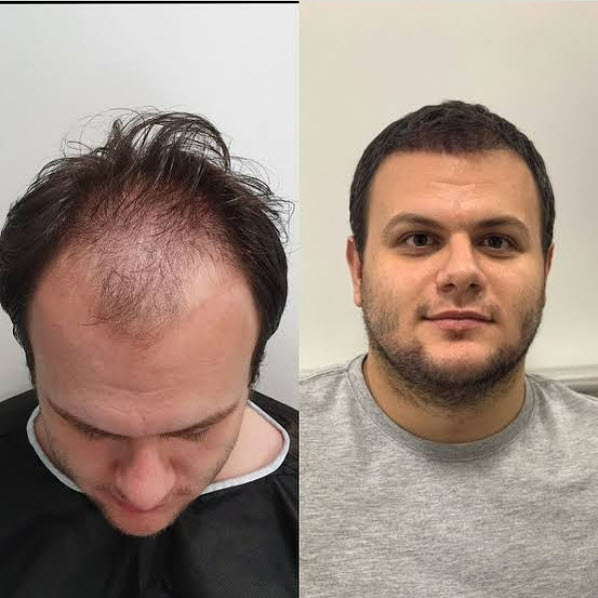
5000 Grafts (FUE Method)
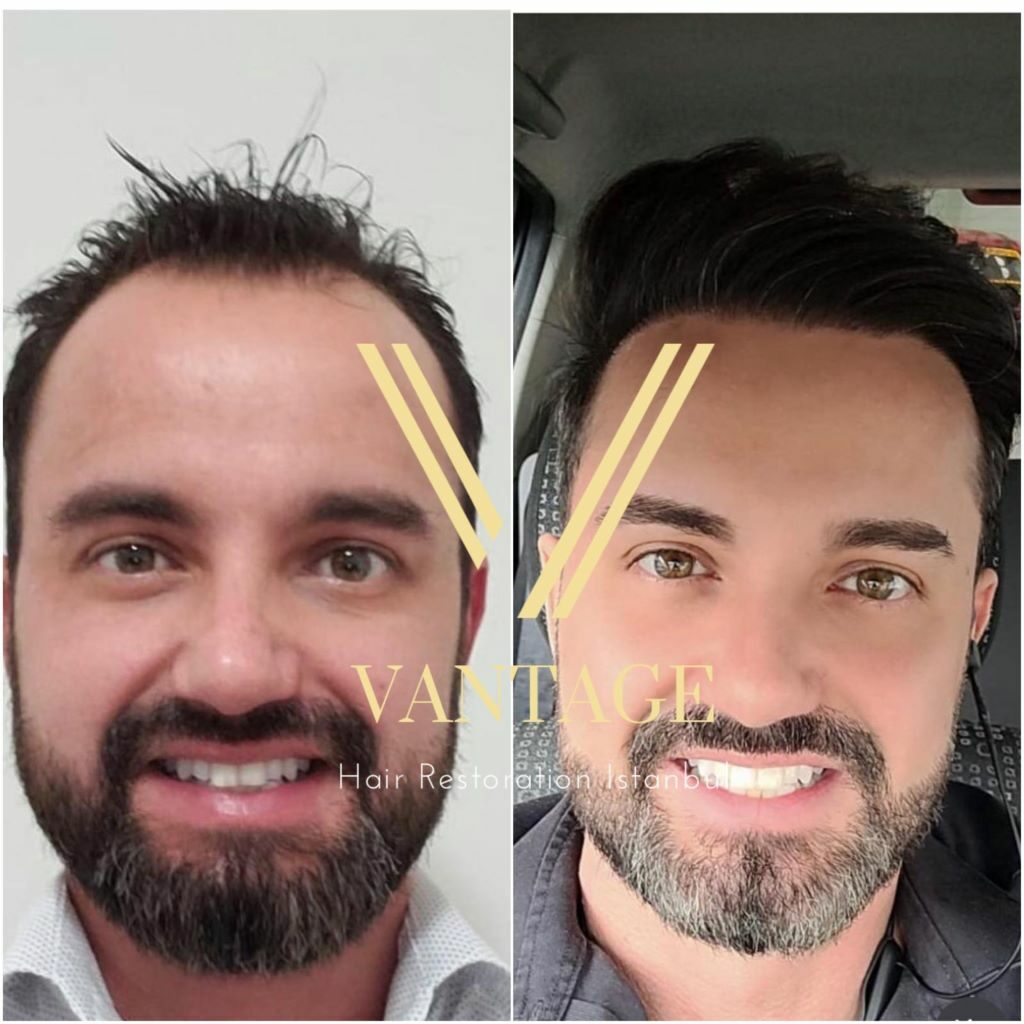
4600 Grafts (FUE Method)
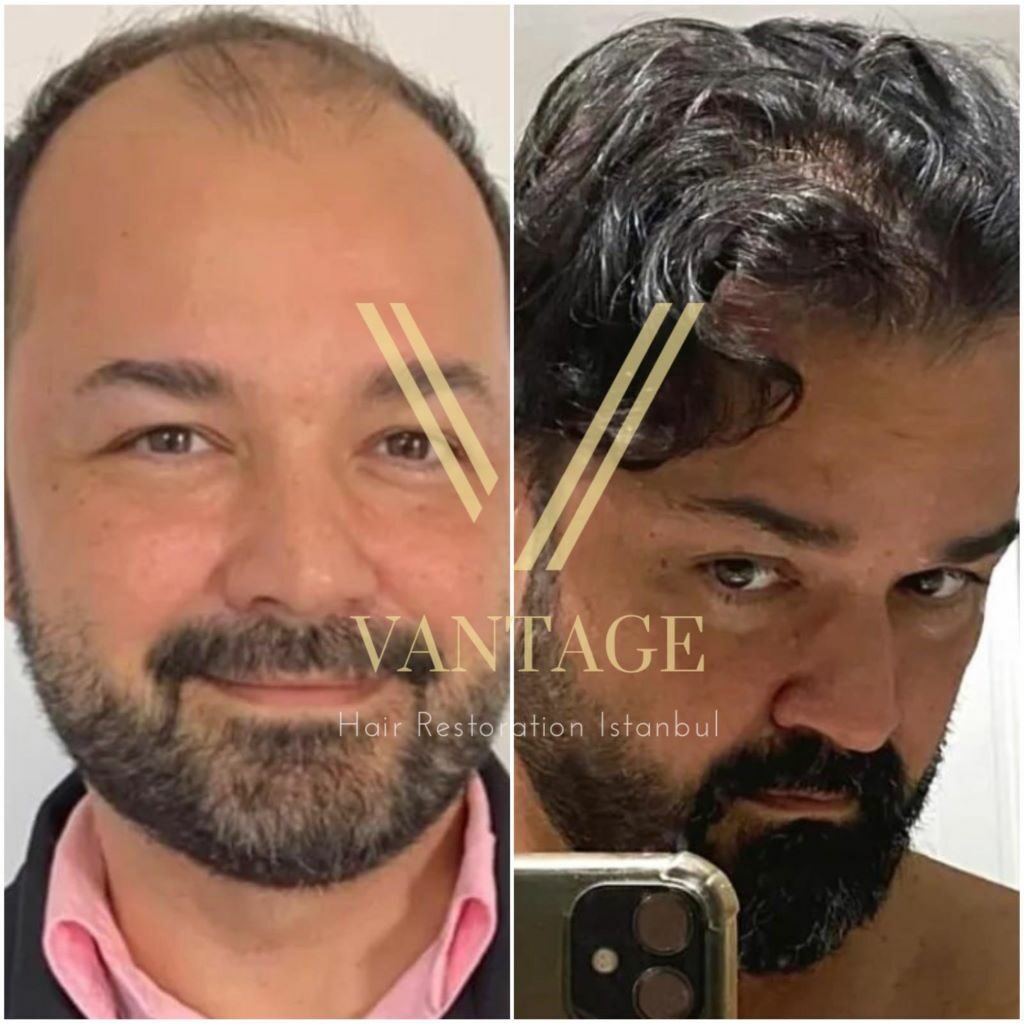
5200 Grafts (FUE Method)
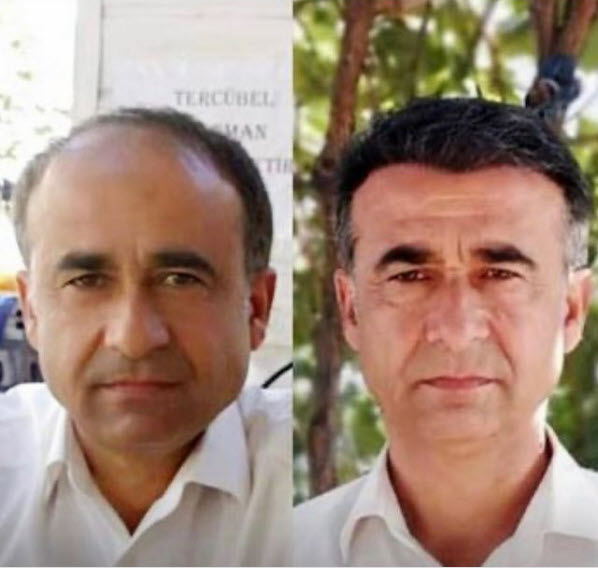
5600 Grafts (FUE Method)
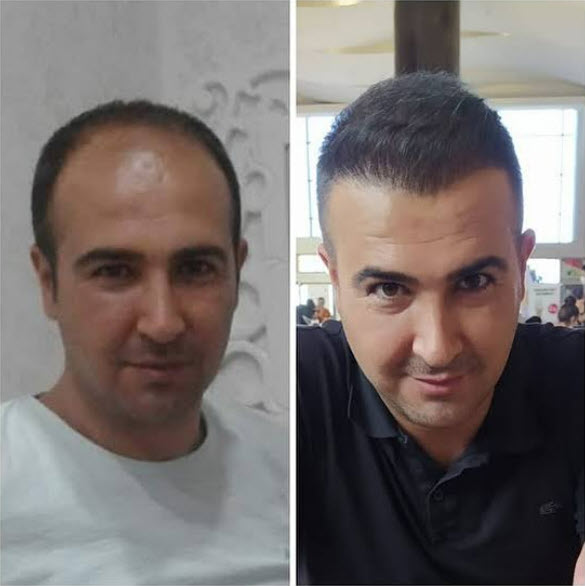
5900 Grafts (FUE Method)

6000 Grafts (FUE Method)
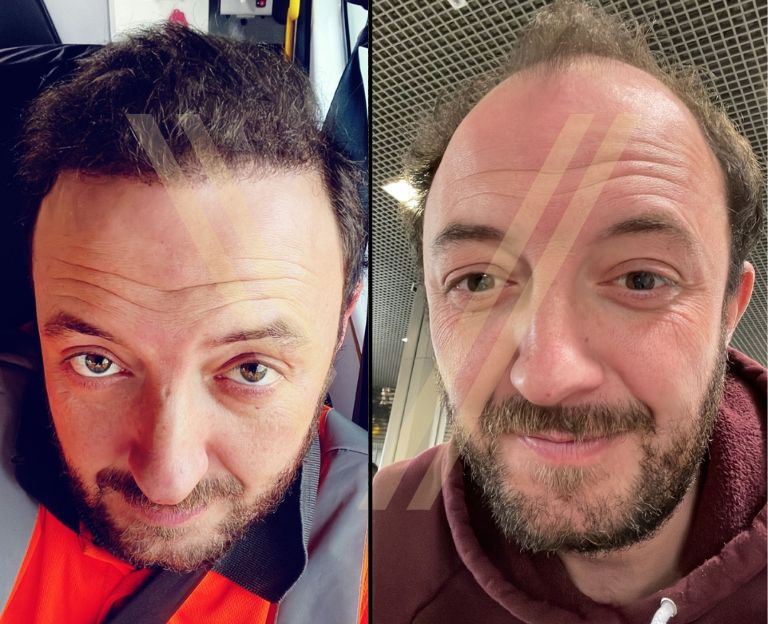
6100 Grafts (FUE Method)
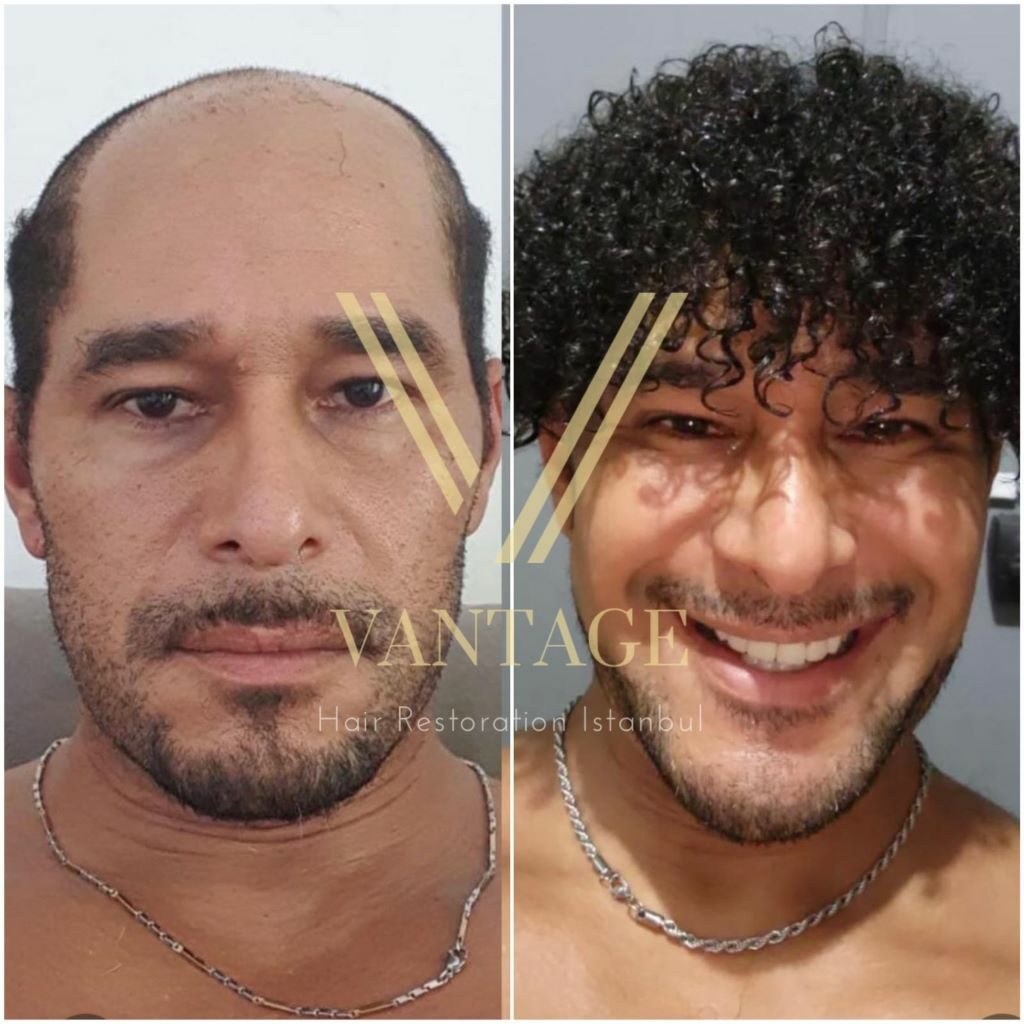
6000 Grafts (FUE Method)
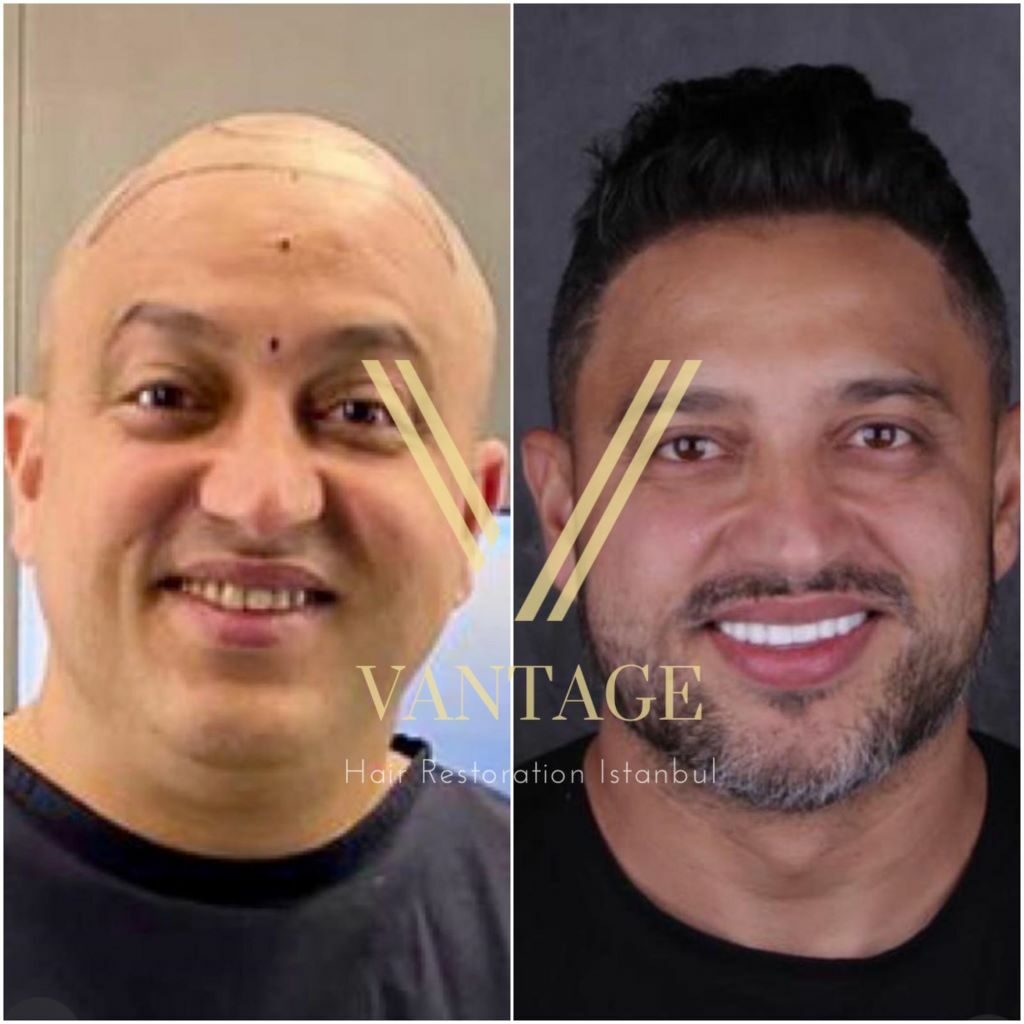
6000 Grafts (FUE Method)
Turkey hair transplant before and after
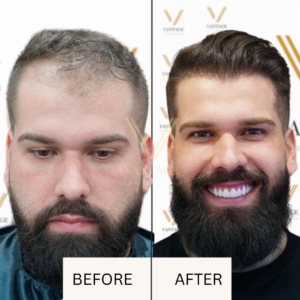
Before and after photos are great indicators of a clinic’s work and what you can expect after your hair transplant operation. Taking a look at comparable cases, you can understand what hair transplant operations can offer you. You can ask for before and after photos of previous patients based on the transplant area and the number of hair grafts required for hair transplant.
We strongly advise our patients to peruse before and after photos before making their decision on whether they want to go through a hair transplant surgery or not.
Here are a few examples of frequently asked quesions about hair transplant results from patients that trusted Vantage Hair Clinic!
How to choose your clinic?
Choosing the right hair clinic for you is one of the most important factors for achieving great hair transplant results. But how do you choose your clinic when there are many promising clinics out there?
You can start by searching for clinics experienced in the specific type of hair transplant you are interested in such as afro hair transplant, or no-shave hair transplant.
Once you have a potential list of suitable clinics, you can ask for details on how they perform the surgery and before and after photos of their patients. Make sure that the before are after photos are comparable to your cases such as the number of grafts that will be transplanted and the transplant area. You might need 3000 grafts of hair transplant for the vertex or 4000 grafts for the crown and front. Ask for similar cases to see the potential results you can achieve.
Post operation support is also an important factor you need to pay attention to while choosing a hair transplant clinic for your operation. Because the recovery period is such a crucial process, you will need a team that can guide you through the recovery after your operation. Make sure that your clinic offers post-operation support and is available for you whenever you have questions after the operation.
Another important thing is, of course, the price point of your chosen clinic. Since there are many different clinics, you find one that is suitable for your budget. However, it is advisable to avoid extra cheap clinics because of safety and quality concerns.
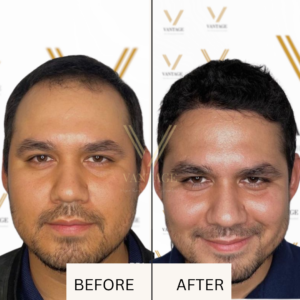
What to know before hair transplant?
Before getting a hair transplant, you should know that this procedure is minimally invasive and offers long-term results. However, seeing the outcomes may take some time, so patience and high maintenance are crucial to getting the best possible results from the procedure.
Firstly, it is essential to avoid using Finasteride, Minoxidil, and blood thinners, as they may impact the final results of the procedure. Additionally, it is advisable to abstain from smoking for 5-7 days before hair transplant.
Apart from substance restrictions, your pre-procedure routine should include wearing a buttoned loose shirt and choosing a light breakfast that is low in fat and high in carbs. It is also important to avoid coffee and tea due to their caffeine content.
Remember that patience and high maintenance are key to achieving the best possible results from the procedure. While the outcomes may take some time to become apparent, adhering to these pre-procedure guidelines can contribute significantly to a successful hair transplant journey.
Do you have to shave your head before hair transplant?
Depending on the hair restoration method you choose, the need to shave your head for the procedure may differ. With U-FUE, a complete head shave is not mandatory, as you can choose partial shaving. Whether shaving is required before the procedure depends on factors such as the extent of your hair loss, the texture of your hair, and the density of your hair grafts. To determine if shaving is necessary in your case, please feel free to contact our medical consultants for personalized advice and guidance.
Why do you need a blood test before hair transplant?
Before hair transplant, you will need to undergo a blood test to evaluate your overall health. This test is critical as it helps determine if you have any condition that may affect the results of the procedure. For instance, individuals with conditions like HIV or Hepatitis B or C may not be eligible to get hair transplants in some places. However, in Turkey, you can still get a hair transplant provided that necessary precautions are taken. Moreover, these blood tests evaluate the blood clotting rate, which is vital to ensure a safe method for controlling bleeding during the procedure.
After Hair Transplant
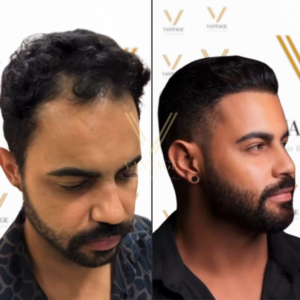
It’s understandable to feel impatient for immediate results after a hair transplant. However, it’s crucial to comprehend that hair follicles require time to settle and become stronger. During this period, it’s essential to exercise patience. To enhance hair growth and minimize downtime, it’s highly recommended that you follow the guidelines provided by your surgeon.
Can you wear a hat after hair transplant?
After a hair transplant, it is essential to take steps to protect your scalp while it heals. One way to do this is by wearing a hat to shield your scalp from sunlight, dust, and other environmental factors that could slow the recovery process. It is safe to wear a hat after a hair transplant, but it is best to wait until the hair follicles have settled before doing so.
How long after hair transplant can I wear a hat?
Usually, you can wear a hat 10 to 14 days after hair transplant, however, it’s essential to stress that, each individual has their own growth pace, and the duration to wear a hat varies accordingly. Moreover, you should follow the surgeons post-operative instructions to avoid any possible complications. By following these guidelines, you can ensure that your scalp heals properly and that you achieve the best possible results from your hair transplant.
Do you have to take medication after hair transplant?
After a hair transplant, your surgeon will prescribe medications aimed at minimizing any discomfort, pain, or possible complications that may arise from the procedure. Generally, these medications are prescribed for a week and are meant to be used after the procedure. It’s worth noting that there isn’t any need for other medications to enhance hair growth apart from those prescribed by the surgeon.
However, in case you feel the need to take other medications to enhance hair growth, you should wait for at least 4 weeks after the procedure and take them only under the guidance and close monitoring of a specialist.
Do you have to take Finasteride after hair transplant?
Finasteride, an FDA-approved medication, is a popular medication to use to slow down hair loss. It acts as 5-alpha reductase, which prevents testosterone from converting into dihydrotestosterone, the main cause of androgenetic alopecia. After undergoing the procedure, it is not necessary to use Finasteride since it does not directly affect the results you will get from the procedure. However, you should use it by only being monitored by a surgeon. Furthermore, you should wait for hair follicles to settle and start growing before using Finasteride, which usually takes 2-3 months after hair transplant.
When to stop Minoxidil after hair transplant?
Minoxidil, also known as Rogaine, is a topical medication to slow down hair loss by enhancing blood flow. Minoxidil works as a vasodilator, which dilutes blood vessels to promote blood flow and slow down hair loss. Although it’s not necessary to use; since topical Minoxidil doesn’t apply any hormonal therapy, you may use it 4 weeks after the procedure. As with any medication, please use Minoxidil monitored by a specialist.
How to sleep after hair transplant?
To ensure the best results after a hair transplant, it is crucial to take proper care of your hair follicles and prevent any kind of damage. One important aspect to consider is your sleeping position. It is recommended to avoid sleeping on your side and instead sleep on your back after hair transplant. Additionally, keeping your head elevated while sleeping can be beneficial, and using extra pillows to support the height and comfort of your neck is also advised.
When can I sleep normally after hair transplant?
After hair transplant, it is essential to properly care for the implanted hair grafts to promote healing and prevent infection. During the first 10-14 days, you should sleep with your head elevated, preferably at a 45-degree angle. Additionally, it is recommended to change your pillow covers regularly to minimize the risk of infection. Once the hair grafts have settled into the recipient area and scabbing has occurred, you can resume sleeping normally.
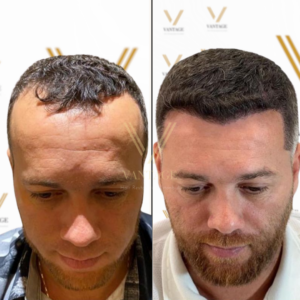
When can I wash my hair normally after hair transplant?
After a hair transplant, the first wash is performed by the medical team at the clinic. Following the first wash, you should continue to wash your hair for the next two weeks using a medical shampoo and foam as instructed. After 15 days, you may resume washing your hair normally. However, it’s crucial to use a shampoo that’s free of parabens, sulfates, and salts, such as baby shampoo. This will ensure that your scalp remains healthy and that the newly transplanted hair follicles are not damaged or irritated.
How often to wash hair after hair transplant?
During the first two weeks after a hair transplant, it’s recommended that you wash your hair once or twice a day, depending on your scalp’s skin type. After this initial period, you can return to your regular hair care routine.
When can I use normal shampoo after hair transplant?
After a hair transplant, you can resume your usual hair care regimen with your hair care products 15 days post-surgery. However, it is advisable to avoid using shampoos with harsh chemicals for at least 6 months as they may cause harm to your newly grafted hair and may cause scalp irritation.
When can I get a haircut after hair transplant?
After undergoing a hair transplant, getting a haircut is an important milestone. It helps in witnessing the hair growth and seeing visible results. It is generally recommended to wait for at least a month before getting a haircut after a hair transplant. However, razor blades should not be used for the first haircut after the transplant a sit may cause scalp irritation. Instead, clippers should be used, and the hair should not be cut too short. You should also ensure that the clippers are cleaned and sterilized before use to avoid any risk of infection.
When can I use clippers after hair transplant?
After a hair transplant, it is important to wait for 10-14 days before using clippers on your native hair. This is because during this time, the scabbing phase is completed, and you do not want to interfere with the healing process. It is also advisable to wait for 2-3 months before using clippers on the transplanted hair to avoid any potential trauma and allow for proper healing.
How to remove scabs after hair transplant?
Scabbing is a natural and expected part of the recovery process after a hair transplant. It’s a sign that your scalp is healing and rejuvenating. To remove scabs after a hair transplant, you can apply panthenol foam to the affected area and let it sit for 30 minutes. This will help to soften the scabs. After 30 minutes, rinse the foam off with warm water and apply a medical shampoo. Gently massage the shampoo into your scalp with circular motions, then rinse it off with water. Finally, pat your scalp dry with sterilized gauze.
How long before scabs fall off after hair transplant?
Generally, these scabs fall off after 10-14 days. During this time, it is advisable to be gentle with them and avoid harsh movements. Instead, you should only pat them lightly to prevent any damage. However, it is essential to exercise caution when attempting to remove or dislodge any dry skin during this process to avoid any damage to the scalp.
When can I rub my head after hair transplant?
Once the hair grafts have settled into the recipient area and hair growth has begun, you can begin gently rubbing your hair. However, it is crucial to wait for at least six weeks before vigorously rubbing or scratching your scalp to avoid any potential damage that could affect the graft survival or cause scalp irritation.
How long after hair transplant can I workout?
After a hair transplant, it is vital to prevent excessive sweating to ensure healthy hair growth. To do this, it is recommended to avoid strenuous activities and heavy workouts for 2-3 weeks after hair transplant. After that, you can start with mild exercises and gradually increase the intensity. It is advisable to wait for 6 weeks after the surgery to return to heavy workout sessions. This will help prevent clogging and promote healthy hair growth.
When can I lift weights after hair transplant?
During the first few weeks of resuming weight training, it is essential to avoid putting pressure on the scalp area by pressing down on weight training equipment such as the weight bench or leg press. This is because sweat and pressure could hinder the growth of the hair transplant.
After undergoing hair transplant surgery, it is generally safe to resume weightlifting after 3-5 weeks. However, if you engage in intense workouts, you may need to wait longer for proper scalp healing and hair graft protection.
When can I sweat after hair transplant?
During the earlier days after a hair transplant, you shouldn’t sweat as possible as you can since it may inhibit the results you’ll get from the procedure. Moreover, sweating and straining during exercise can be harmful for the first two weeks after your transplant surgery. It’s best to take it easy and avoid any activities that put stress on your body, such as heavy lifting or intense workouts.
What does it look like after a hair transplant?

After a hair transplant, you may notice small dots around the recipient area, a natural outcome of the procedure. This may lead to swelling, bleeding, and slight discomfort, but there’s nothing to worry about, and these symptoms will subside within a week. As time passes, you’ll see an improvement in the results each day, and the tiny dots will gradually disappear, leaving behind a fuller and natural-looking hair.
Will hair transplant look natural?
When performed by a qualified surgeon and followed by a healthy aftercare regimen, a hair transplant can provide natural-looking and long-lasting results. The success of the procedure depends on various factors such as the extent of hair loss, the patient’s health condition, and the surgical technique used by the surgeon.
Do transplanted hairs look different?
When hair follicles are transplanted into the recipient area, their growth cycle begins from the bottom as opposed to native hair follicles. This may cause slight differences between the transplanted hair follicles and the native hair. However, over time, as the transplanted hair follicles grow, these differences become less noticeable. As transplanted hair follicles complete their cycle, there will be no difference between native hair and transplanted hair.
How long do hair transplants last?
A hair transplant is a long-lasting and effective solution for hair loss. However, the longevity of a hair transplant depends on several factors such as the health of the donor area, the expertise of the specialist, and the aftercare routine followed during hair transplant recovery timeline. Therefore, if you are considering a hair transplant, it is essential to choose the right specialist and follow the aftercare routine to ensure the best possible results.
How long do Turkish hair transplants last?
Turkey, known for its highly skilled experts and state-of-the-art equipment, is a popular destination for medical procedures, especially hair transplants. The use of cutting-edge equipment during the procedures enhances their efficiency and permanency. Additionally, with proper aftercare, getting a hair transplant in Turkey not only provides natural-looking results but also offers a lifelong experience.
How long before you see results from a hair transplant?
Patience is crucial when anticipating the results of a hair transplant, as it may take up to 12 months to see the full outcome. During this period, providing proper care and embracing a healthy lifestyle are essential for a hassle-free experience. To be a part of your hair transplant recovery timeline and receive personalized guidance, feel free to reach out to our medical consultants. Your patience and commitment to post-operative care contribute significantly to achieving the best results from the procedure.
How long before hair grows after transplant?
During the first month after a hair transplant, your hair enters the recovery phase. During this time, minimal scars are healed, scabbing occurs, and shock loss happens through the end of the month as a natural part of the growth cycle.
It is essential to wait for 2-3 months before seeing any initial signs of hair growth. After that, your hair growth will continue at its normal pace.
What happens 10 years after hair transplant?
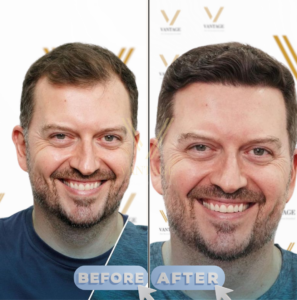
The growth of a hair follicle occurs in three different phases: anagen, telogen, and catagen. Anagen is the longest phase of hair growth, typically lasting 3-7 years. During this phase, the hair follicles are actively growing, and hair strands can reach their maximum length.
After the anagen phase, the hair enters the catagen phase, which is a transitional phase lasting for about two weeks. During this phase, the hair follicles shrink, and the hair strands detach from the scalp, preparing for the final phase of hair growth, which is the telogen phase.
The telogen phase is the resting phase, during which the hair follicles remain dormant for up to three months. After this phase, the hair strands fall out, and the hair growth process starts again. With proper care and maintenance, it is possible to maintain the results of a hair transplant for over 10 years, with up to 80% success rate.
Can you go bald after hair transplant?
When a hair transplant is performed correctly with proper technique and by an experienced hair transplant specialist, you’ll get long lasting results. However, if the donor area is chosen incorrectly or if you have an autoimmune disease that may reject even your own grafts, you may still go bald after hair transplant. Additionally, if you get a hair transplant when your hair loss hasn’t stopped, you may go bald after the procedure. It is important to consult with a reputable and experienced hair transplant specialist to ensure the best possible results.
Can hair transplant be done twice?
In most cases, a single hair transplant session is usually sufficient to treat hair loss and achieve the desired density. However, there may be instances where a single session may not be adequate, or the first hair transplant may have gone wrong. In such situations, it is possible to consider a second hair transplant. However, it is essential to have a healthy donor area that can cover the second hair transplant, and it is advisable to wait until the previous hair transplant has completely healed before considering a second one.
Which age is best for hair transplant?
There is no specific age that is considered best for getting a hair transplant. You can get a hair transplant whenever you want, as long as your hair loss has stopped and you have an adequate donor area. Typically, many patients opt for a hair transplant in their late 20s to 40s. However, since everyone’s hair loss experience is unique, some people may be suitable for a hair transplant at an earlier or later age. The key is to wait until the hair loss process can be fully understood, and a clear estimate of future hair loss can be made.
What age is too late for a hair transplant?
It’s never too late to get a hair transplant as long as you have enough donor area. However, as you age, the efficiency and durability of your donor area may decrease. It’s also important to keep in mind that as you get older, your health conditions may become more complex. Therefore, it’s advisable to seek the approval of a general practitioner before getting a hair transplant.
How much does a hair transplant cost?
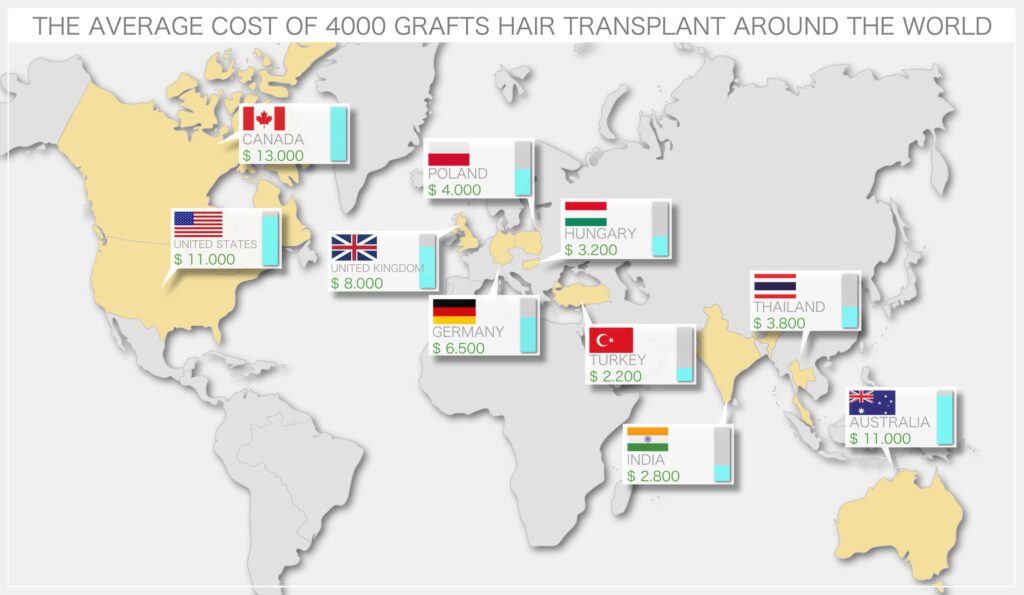
Turkey has emerged as a leading destination for hair transplant due to its top-notch facilities and reasonable prices. There are several hair transplant options available in Turkey, and you can find many skilled specialists who offer excellent services at affordable prices. Hair transplant costs in Turkey are calculated based on the method and extent of hair loss, rather than on a per-graft basis as is common in other countries. This makes hair transplant in Turkey more economical and a more feasible option. On average, the cost of a hair transplant in Turkey ranges from $2,200 to $4,000.
How much does 1000 hair grafts cost?
If you have a slightly receding hairline, 1,000 grafts may be sufficient in order to achieve a denser look. In Turkey, the cost of a hair transplant may range from $2,000 to $3,500 on average, depending on the chosen method and the characteristics of hair follicles such as thickness, texture, and density.
How much does 2000 hair grafts cost?
In Turkey, the cost of a hair transplant procedure typically ranges from $2,000 to $3,500 for 2,000 grafts. However, the exact price varies depending on the individual patient’s needs.
How much does 3000 hair grafts cost?
3,000 grafts may be adequate if you have slight to moderate hair loss and want to achieve a denser look with hair transplant. Especially, for receding hairline, 3,000 grafts affect the density substensionally. In Turkey, a hair tranpslant cost $2,200-$3,500 on average.
How much does 4000 hair grafts cost?
4,000 grafts hair transplant is often sufficient to treat the issue and attain the necessary density. This number of grafts is typically enough to treat a receding hairline and a thinning vertex. Generally, 4,000 grafts hair transplant costs between $2,200 and $2,400, but the actual cost may depend on factors such as the thickness, texture, and density of the hair follicles, as well as the methods used during the operation.
How much does 5000 hair grafts cost?
In general, 5,000 grafts are considered adequate to achieve a fuller, denser appearance on the entire head, but this number may be higher or lower depending on factors such as hair thickness, hair color, and the size of the balding area. On average, the cost for 5,000 grafts may range from $2,200 to $4,000.
How much does 6000 hair grafts cost?
Turkey is renowned for its affordable hair transplant procedures. However, the total cost may vary according to several factors such as the clinic’s reputation, the experience of the surgical team, the location, and any additional services provided. On average, a 6000 graft hair transplant in Turkey can cost between $2,500 and $4,000.
How much does 7000 hair grafts cost?
A healthy donor area typically contains 6,000-8,000 grafts. However, extracting 7,000 grafts in a single session can be challenging, so many specialists usually recommend dividing it into two separate sessions. This will ensure that the patient receives a safe and successful hair transplant.
Regarding the cost, a 7,000 graft hair transplant in Turkey can range from $2,500 to $4,000 on average, depending on various factors. It’s important to note that the cost may vary based on the clinic, the surgeon’s expertise, and the location.
Hair transplant is a comprehensive process with its before and after, so it’s essential to choose a qualified surgeon who can guide you through the process and deliver the best results possible. At Vantage, our expert medical staff is dedicated to helping you achieve a denser, more youthful appearance. Choose Vantage today and experience the difference that comes with personalized care and attention from experts in the field. Click the button below to connect with our medical consultants today. Don’t wait any longer to start your rejuvenating journey!

